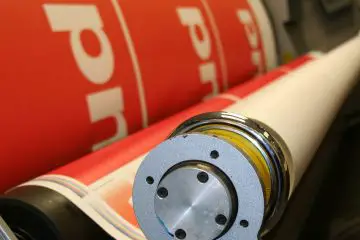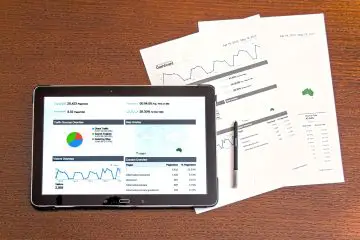A newsletter is a continuous process. Once you have sent it, the evaluation begins. This is particularly important because you can use the key figures to see whether your newsletter has really achieved its goal – or whether you need to make further improvements.
The newsletter evaluation provides you with i.e. important information about which screws you still have to turn. Through regular analysis, you learn directly from your target group what you can do better with your newsletter. So never consider the evaluation as a chore. Instead, see it as an opportunity to prepare your e-mails in the best possible way!
We will explain which conclusions you can derive from which newsletter key figures…
1. The open rate: Was the subject good?
First, look at the open rate. A distinction is made between the individual openings, i.e. the number of recipients who have opened the newsletter, and the total openings, which also include repeat openers.
According to a survey, the average opening rate for newsletters in 2019 was around 25%. So on average, every fourth person opens a newsletter. Was your opening rate at least average or even higher? Then that’s already a good sign.
However, if it is lower, you should definitely take action. Parameters that influence the opening rate of newsletters are e.g. B. the subject and the time of dispatch. So use an A/B test to optimize your subject line and send timing. Incidentally, you should also do this if your opening rate is already above average. Of course, these values only give a hint – and there is actually always potential for optimization!
2. The click rate: Is your content convincing?
Who clicks on what in your newsletter? You should always keep a close eye on this. This is how you find out whether your content is well received by your readers. A distinction is made between individual clicks (how many recipients clicked on something in total?) and the total number of clicks.
In the newsletter2go survey, the average click rate in 2019 was 4.25%. Do you lie about it? This indicates that your content is interesting and well-prepared! Of course, you should not rest on your laurels. Content optimization is always important. In this way, you can adapt your content even better to the needs of your target group. This is how you turn your newsletter into a really powerful tool to play out your content in a targeted manner!
3. The bounce rate: Is your newsletter well received?
The bounce rate indicates whether your newsletter is actually received. A distinction is made between soft bounces (recipient’s mailbox is full) and hard bounces (newsletter could not be delivered permanently). Even if you end up in the SPAM folder, it will be included in this rate.
The average rate in 2019 was 2.34%. Is your rate in the newsletter evaluation significantly higher or lower? This tells you how compliant you are with SPAM regulations and whether your technical structure is well positioned. If you have surprisingly high bounce rates, you should definitely reconsider the entire shipping process and change it if necessary.
4. The unsubscribe rate: Are you making your target audience happy?
High unsubscribe rates are of course the maximum penalty for newsletter evaluation. After all, these key figures indicate that your target group is no longer interested in your newsletter. In the worst case, she has even lost interest in your company.
On average, the unsubscribe rate in 2019 was 0 .34%. If you’re below that, you don’t have to worry. Because a few cancellations are completely normal. However, if you are significantly higher, this is a clear warning signal. Then you should first question the registration process. Is this made transparent? Do people know what they are getting themselves into when they subscribe to your newsletter? Or are you being forced to register at various points?
Ultimately, the unsubscribe rate in the newsletter evaluation shows above all that you have not kept your promise with your content. People signed up with some expectations. However, this was not fulfilled, be it due to inappropriate content, too frequent mailings, or other aspects. So take a close look and question the entire process from registration to mail!
5. The conversion rate: Does your newsletter ignite?
Each newsletter has a clear goal. Of course, you primarily inform, but what you really want is for your target group to take a specific action. To see if this works, you should look at the conversion rate in your newsletter evaluation. This shows you your individual goal (download, purchase, request, etc.).
In order for this to work, you usually have to integrate Google Analytics into your mail program. Then replace all links from your newsletter with tracking links. This allows you to track exactly who comes from your newsletter to your website and what action is taken.
You can also record the passive conversions, i.e. users who did not go directly to your website via your newsletter, but who receive it and use it in a different way bought you. Finally, these actions may also be attributed to your newsletter. You can also record in your newsletter evaluation who receives your newsletter but never goes to your website.
Overall, of course: The conversion rate should be as high as possible. After all, the highest opening rates bring your company reach, but ultimately no more sales. That’s why you have to take a close look here to see whether your conversion goal is really being reached.
If your conversion rate is low, there can be various reasons. On the one hand, it can be due to the content of your newsletter, but also to the page to which the newsletter links. So if you have high opening rates and click numbers, but no conversion in the end, the landing page is most likely to blame.
Newsletter evaluation is an eternal process
It is important that you understand that a newsletter is a continuous development. What worked yesterday may no longer work tomorrow. It is therefore very important that you always keep an eye on the newsletter evaluation and think about how you can further optimize your emails.
The given average figures give you a guide. In the end, however, they are no more than a pointer and have only limited significance for your company and your industry. However, if you are looking for more industry-specific information. What should be clear: Even if the newsletter key figures are good in comparison – keep an eye on them and test them!








